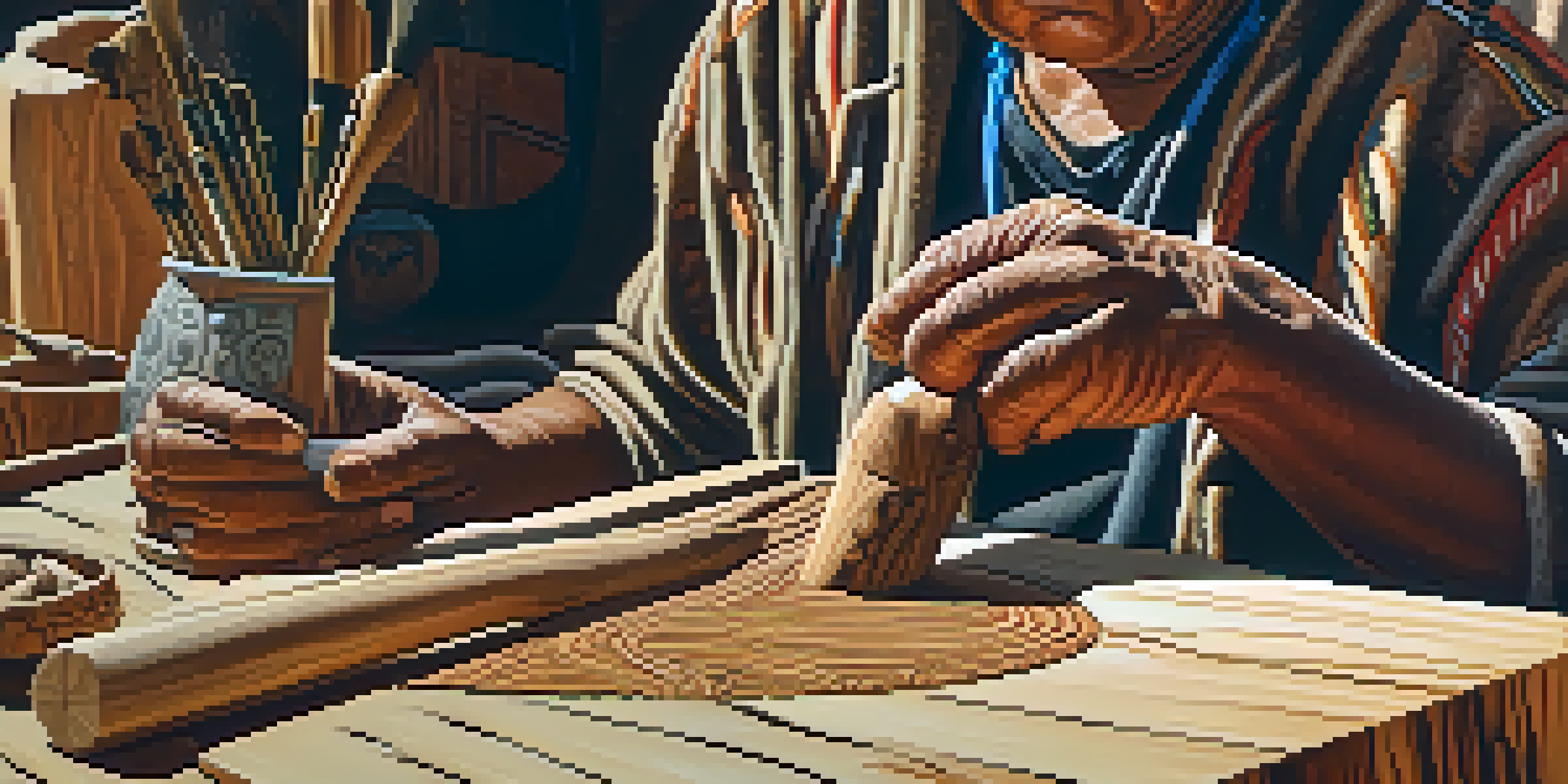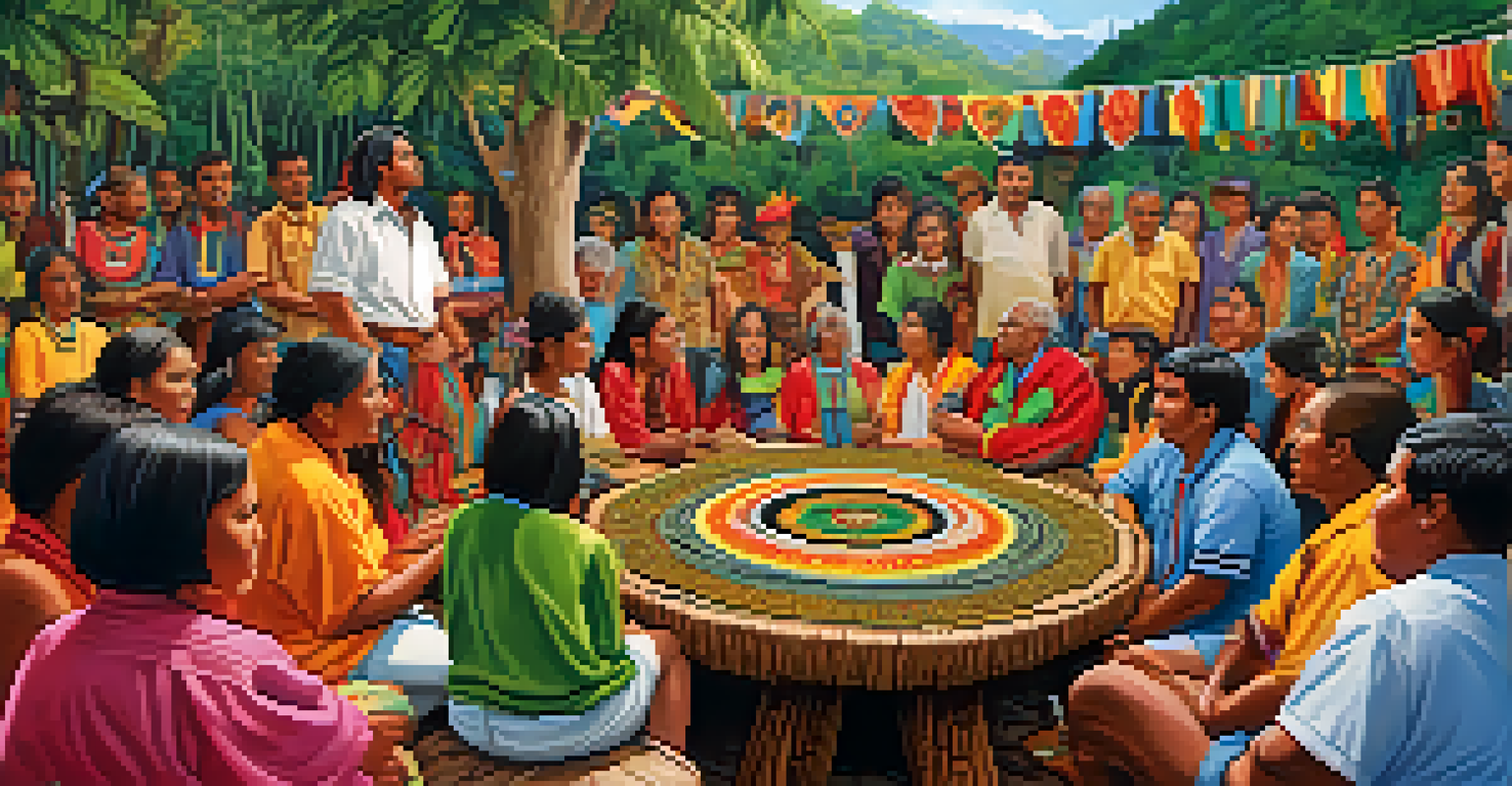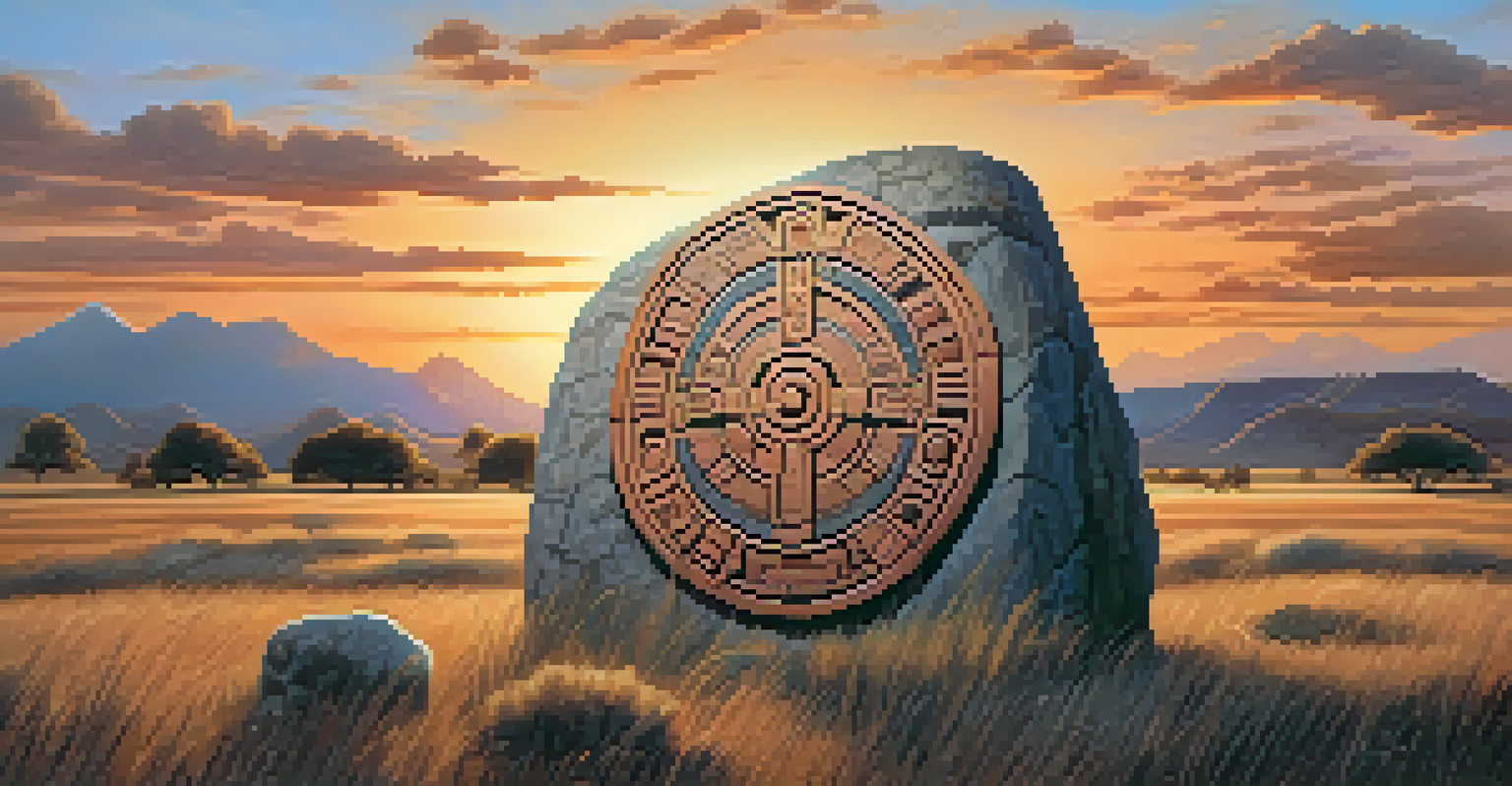Carving as a Form of Storytelling in Indigenous Cultures

The Power of Storytelling in Indigenous Cultures
Storytelling is a cornerstone of Indigenous cultures, serving as a vital means to pass down traditions, beliefs, and history. Through oral narratives, communities connect generations, ensuring their unique identities remain vibrant. Carving, as an art form, complements this tradition by providing a visual representation of these stories, enabling deeper connections.
Storytelling is the most powerful way to put ideas into the world today.
Each carving can represent a specific tale, a cultural symbol, or even a lesson from the past. The act of carving itself often involves communal participation, fostering a sense of unity among artists and storytellers. This collaboration emphasizes how intertwined storytelling and community are within Indigenous cultures.
By integrating art into storytelling, Indigenous peoples create a multi-layered narrative experience. Carvings not only engage the viewer visually but also evoke emotions and provoke thought, making stories resonate more deeply. This synergy of art and narrative enriches the cultural tapestry of these communities.
Materials and Techniques in Indigenous Carving
Indigenous carvers use a variety of natural materials, such as wood, bone, and stone, which reflect their environment and availability. Each material carries its own significance, with different textures and colors contributing to the story being told. For example, cedar wood is often favored for its durability and aromatic properties, symbolizing life and strength.

Techniques vary widely across different Indigenous cultures, with some employing traditional hand tools while others may incorporate modern methods. This blend of old and new allows for innovation while respecting ancestral practices. Carving techniques can also signify cultural identity, where specific styles are recognized as belonging to particular tribes or communities.
Storytelling Connects Generations
Indigenous storytelling preserves traditions and identities through oral narratives and artistic expression.
Understanding the materials and techniques used in carving helps to appreciate the artistry behind each piece. The skill involved in transforming raw materials into intricate designs is a testament to the carver's dedication and cultural knowledge. These elements, combined, not only tell stories but also celebrate the environment and heritage from which they arise.
Symbolism in Carving: More than Meets the Eye
Symbols play a crucial role in Indigenous carvings, often conveying complex meanings that may not be immediately apparent. Each symbol can represent a concept, a spirit, or an important event, making the carvings rich in significance. For instance, an eagle may symbolize strength and freedom, while a fish can represent abundance and community.
Art is a way of survival.
The interpretation of these symbols can vary among different Indigenous cultures, creating a rich tapestry of meanings. This diversity highlights the importance of context, as a carving's story may change depending on the viewer's cultural background. Thus, engaging with these artworks often requires a willingness to explore and learn.
Through symbolism, carvings become a dialogue between the artist and the viewer, inviting reflection and interpretation. This layered storytelling approach enriches the experience, allowing individuals to connect with the culture on a more profound level. As audiences engage with these symbols, they gain insights into the values and beliefs that shape Indigenous life.
Carving as a Tool for Cultural Preservation
In today's rapidly changing world, carving serves as a significant tool for preserving Indigenous cultures and traditions. As younger generations seek to reconnect with their heritage, carving workshops and programs have emerged, fostering skills and knowledge transfer. These initiatives not only empower individuals but also strengthen community bonds.
Carving also plays an essential role in the revitalization of languages, as many carvings incorporate words or phrases in Indigenous languages. This practice reinforces the importance of language in storytelling and cultural identity. By intertwining language with art, communities ensure that their narratives are not lost to time.
Carving Preserves Cultural Heritage
Carving serves as a vital tool for cultural preservation, connecting language, art, and community identity.
Moreover, preserving these artistic practices helps protect Indigenous rights and land. As artists share their stories through carving, they bring awareness to their cultures and the challenges they face. This visibility can foster respect and understanding, ultimately supporting the ongoing fight for rights and recognition.
The Role of Carving in Community Identity
Carving is more than just an artistic expression; it plays a pivotal role in shaping collective identity within Indigenous communities. Through shared stories represented in carvings, individuals find a sense of belonging and pride in their heritage. This communal aspect of carving fosters a deeper understanding of one's place in the world.
Community identity is often reinforced through the celebration of traditional carvings during festivals and gatherings. These events serve as a platform for storytelling, where artists showcase their work while narrating the tales behind each piece. Such practices not only honor the past but also create spaces for dialogue about the future.
Furthermore, the recognition of Indigenous carving as an art form contributes to the broader understanding of these cultures. As more people encounter these artworks, they become aware of the rich narratives and histories embedded within them. This awareness is crucial in promoting respect and appreciation for Indigenous cultures.
Challenges Facing Indigenous Carving Today
Despite its significance, Indigenous carving faces numerous challenges in the modern world. Issues such as globalization and commercialism can dilute the cultural meanings behind these artworks. As demand for Indigenous art grows, there is a risk that the authenticity of the craft may be compromised, leading to mass-produced imitations.
Additionally, many Indigenous carvers struggle with access to materials and resources, which can hinder their ability to create. Environmental changes and restrictions on land use can impact the availability of traditional materials, making it difficult for artists to sustain their practices. This situation underscores the importance of supporting local artisans and their communities.
Challenges Threaten Traditional Carving
Globalization and resource access issues pose significant challenges to the authenticity and sustainability of Indigenous carving practices.
Moreover, as younger generations become more influenced by modern technology, there is a concern that traditional skills may fade over time. Encouraging the next generation to engage with carving can help ensure that these cultural practices are not lost. By fostering a sense of pride and appreciation for their heritage, communities can continue to thrive.
The Future of Carving in Indigenous Storytelling
Looking ahead, the future of carving in Indigenous storytelling holds both promise and potential. As awareness of Indigenous cultures grows, there is increased interest in supporting authentic Indigenous art. This trend can empower artists and sustain traditional practices, allowing stories to be told through carving for generations to come.
Innovative collaborations between Indigenous artists and contemporary creators are also emerging, blending traditional techniques with modern designs. These partnerships can introduce carving to new audiences while preserving cultural integrity. By embracing change while honoring tradition, the storytelling aspect of carving can evolve.

Ultimately, the future of carving as a storytelling medium will depend on the collective efforts of Indigenous communities and their allies. By prioritizing education, cultural exchange, and appreciation, we can ensure that these powerful narratives continue to resonate. The stories told through carving are not just relics of the past; they are living traditions that continue to shape identities and inspire future generations.